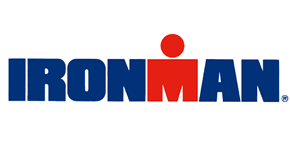
.png)

RESEARCH ESSENTIALS FOR
ULTRAMARATHON
This monthly online magazine provides in-depth analyses of the latest research in ultramarathon training and racing. In each issue, our team of expert coaches, scientists, and editors reviews and summarizes 3-5 recently published, peer-reviewed papers. Using clear and accessible language, we highlight the pros and cons of each study and translate the main findings into actionable takeaways for athletes and coaches.
RADIO SPOTS

BBC World Service, Jan 2024

Ultramarathons: Are Women Faster than Men? BBC World Service, Feb 2024
VIDEOS
Interview: The Extreme Challenges of Ultramarathons
Inside Science, Sept 2019
Lecture: Sex Differences in Ultra-Marathon Physiology
Leeds Beckett University, May 2021
Interview: Physiology and Nutrition for Ultra-Runners
Western States Endurance Run, Apr 2022
Interview: Potential Long-Term Health Effects of Ultramarathon
Koopcast, Oct 2021
PODCASTS (AS GUEST)
ARTICLES
Training Intensity, Training for Altitude and Does Beer Help?
Ultra-Running Magazine
Dec-Jan 2022-2023
50 k After Your First Marathon, K-Tape, and How Short Should Your Longest Run Be?
Ultra-Running Magazine
Sept/Oct 2022
RESEARCH
KEY RACES



The MARATHON DES SABLES is an infamous 155 mile, 7-day, self-sufficient footrace through the Sahara Desert. On day six of this race, we completed a 42 km section in 54 °C (130 °F). At the time, it was the hottest temperature recorded in race history.
It was my first major ultra-marathon, following a string of smaller stage races and a 50-mile trail run. I finished in 230th position of 900, and raised over £5,000 for the Royal Marsden Cancer charity. To this day, it's the greatest experience I've had contesting an ultra-marathon.




The NORTH DOWNS WAY 100 was my second attempt at the illusive 100-mile finish, after my first attempt of the Lakeland 100 was scuppered when my running buddy exclaimed he could no longer see!
This public trail stretches from Farnham in the Surrey hills to Ashford in Kent; it was actually 105 miles in length. It has a moderate cumulative climb of 10,000 feet. Traversing the course in its entirety took me 26 hours, 11,000 calories, and and around 215,000 steps.
It was hot in 2018, the year I ran, with midday temperatures exceeding 30 °C, and many people fell to the heat.
The IRONMAN Triathlon European Championships. Not exactly an ultra-marathon, but it was my gateway into the sport. I drove from London to Frankfurt, Germany with my bike in the trunk. Race temperature exceeded 30 °C .




The PINE CHALLENGE was a UK enduroman, comprising as many 5.3-km loops as possible within 6 hours.
I got my food right on this day, and the weather conditions were perfect for running, albeit slightly muddy. I trotted to a 2nd-place finish, much to the chagrin of the race director who, for an unknown reason, didn't much like me.








The RAY MILLER 50 took me from the Yorkshire Peaks to the Santa Monica Mountains. I had a blast navigating this undulating/hilly trail in Southern California. The conditions were perfect and I stormed to a 6th-place finish overall.
The race starts and finishes with a steep 5 mile ascent/descent with stunning views of the ocean. Almost worth falling over for.
The ST. ALBANS STAMPEDE was a 12-hour enduroman; lap after lap of the same solitary 4-mile loop. A roller-coaster of emotions throughout, from euphoria to despair. You can run it in groups, as a relay. I did not. It helps if you get your nutrition right; I did not!






The GLENCOE MOUNTAIN ULTRA in the Scottish Highlands was, as you'd expect, a dark and moody affair. I can't recall how much climbing was involved, but 55 km took me over 8 hours. I finished in 3rd place, even after losing my way. The race was "organized" by The Trail Events Co., and I cannot recommend more strongly that you never participate in one of their races. Their organization and safety measures were poor to the point of negligence. These are not qualities that go over well in the isolated and dangerous Highlands.
























